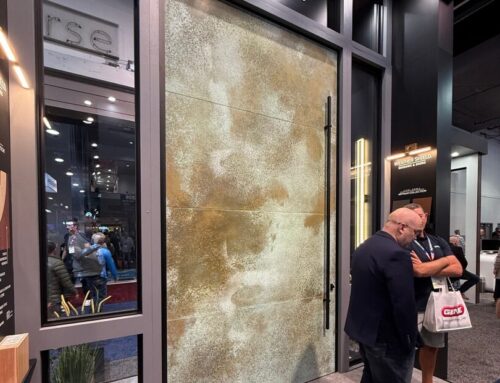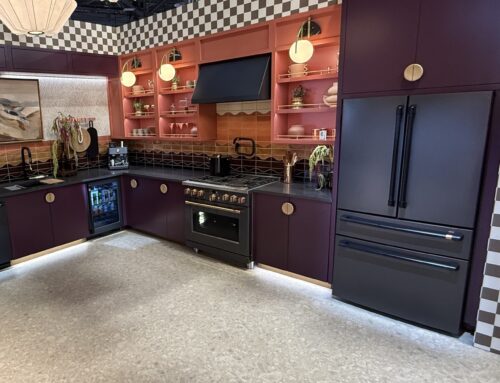Future Lifestyle Trends Shaping Homes & Living Spaces
February 18, 2025
As consumer preferences continue to evolve, future lifestyle trends will be driven by sustainability, technology, wellness, and flexibility. Here’s a detailed look at emerging trends that will influence home design, building materials, and everyday living:
Sustainable & Regenerative Living
Consumers are moving beyond sustainability toward regenerative living, where homes give back to the environment rather than just minimizing harm.
Key Trends:
- Net-Zero & Passive Homes – Homes designed to produce as much energy as they consume.
- Carbon-Negative Materials – Use of hempcrete, algae-based insulation, and bio-based composites.
- Water Conservation Systems – Smart water-recycling showers and greywater reuse systems.
- Regenerative Landscaping – Native plant gardens, permaculture, and biodiversity-friendly yards.
Impact on Home Design:
- Increased demand for self-sustaining homes with solar panels, rainwater harvesting, and geothermal heating.
- Rise of eco-friendly construction materials, such as mycelium bricks and biodegradable insulation.
Smart & Adaptive Homes
As technology advances, homes will become more intelligent, self-adjusting, and responsive to user needs.
Key Trends:
- AI-Powered Home Automation – Homes that learn and adapt to daily routines.
- Smart Surfaces & Materials – Walls that change color based on mood or temperature.
- Voice & Gesture-Controlled Homes – Hands-free control of lighting, security, and appliances.
- Integrated Health Monitoring – Sensors in flooring and beds to track wellness.
Impact on Home Design:
- Flexible, multi-use spaces with furniture and walls that adjust based on needs.
- Smart kitchens with AI-assisted meal planning and robotic cooking assistants.
- Security advancements like facial recognition door locks and drone surveillance.
Wellness & Biophilic Design
Health and wellness are at the forefront of home design, leading to spaces that promote mental and physical well-being.
Key Trends:
- Circadian Lighting Systems – Lights that mimic natural sunlight for improved sleep.
- Indoor Air Purification – Walls coated with air-cleaning materials like photocatalytic paint.
- Soundproofing & Acoustic Wellness – Quiet zones and sound-absorbing design elements.
- Hydrotherapy & Wellness Baths – Spa-inspired bathrooms with aromatherapy and chromotherapy.
Impact on Home Design:
- Integration of indoor gardens and green walls for air purification.
- Increased use of natural materials like stone, wood, and clay for a calming aesthetic.
- Meditation rooms and wellness pods becoming common in new home designs.
Flexible & Modular Living Spaces
As remote work and hybrid lifestyles continue, homes must adapt to multiple functions.
Key Trends:
- Foldable & Hidden Furniture – Desks that disappear into walls, Murphy beds with built-in storage.
- Convertible Rooms – Spaces that shift from home office to gym to guest room.
- Tiny & Prefabricated Homes – Compact, movable living solutions for urban settings.
- Co-Living & Multi-Generational Homes – Homes designed with separate living spaces for extended families.
Impact on Home Design:
- Growth in modular construction and prefabricated homes for quick assembly.
- Glass partitions and sliding doors for adaptable open-concept designs.
- Space-efficient storage solutions built into walls, stairs, and furniture.
Digital & Virtual Living Spaces
The rise of the metaverse and augmented reality (AR) will reshape how people interact with their homes.
Key Trends:
- Virtual Reality Home Offices – Digital workspaces that eliminate physical office needs.
- Augmented Reality Shopping – AI tools allowing homeowners to preview furniture and décor.
- NFT-Backed Real Estate – Digital ownership of physical and virtual properties.
- Holographic Entertainment – Interactive, immersive home entertainment experiences.
Impact on Home Design:
- Projection-based walls that change decor instantly.
- Digital art galleries featuring NFT artwork.
- Interactive mirrors and smart glass windows that display personalized information.
Climate-Resilient Homes
With climate change causing extreme weather, homes will need to be resilient, self-sufficient, and disaster-proof.
Key Trends:
- Storm-Resistant Materials – Impact-proof glass, flood-resistant flooring, and wind-resistant roofing.
- Off-Grid Capabilities – Backup battery storage, solar integration, and water filtration systems.
- Heat-Resistant & Cooling Designs – Advanced ventilation, reflective materials, and cooling paint.
- Fire-Resistant Home Design – Fireproof cladding, ember-resistant vents, and defensible landscaping.
Impact on Home Design:
- Increase in self-sustaining homes with emergency backup systems.
- Smart weather monitoring systems integrated into home automation.
- Use of fire-retardant materials in wildfire-prone regions.
Ethical & Circular Economy Design
Consumers are becoming more conscious of waste, pushing for homes that embrace circular economy principles.
Key Trends:
- Upcycled & Reclaimed Materials – Furniture and building materials made from recycled wood, plastic, and metal.
- Repairable & Replaceable Design – Homes built with modular parts that can be easily replaced.
- Second-Hand & Vintage Revival – A rise in refurbished furniture and architectural salvage.
- Minimalist, Long-Lasting Aesthetic – High-quality, timeless design that reduces waste.
Impact on Home Design:
- Manufacturers creating modular furniture with interchangeable parts.
- Growth in eco-conscious construction methods like 3D-printed recycled concrete.
- Increase in rental-based home products instead of permanent purchases (e.g., leased kitchen appliances).
Maximalism & Personalization
While minimalism has dominated for years, bold and expressive interiors are making a comeback.
Key Trends:
- Layered Textures & Patterns – Mixed textiles, vibrant wallpapers, and decorative ceilings.
- Personalized Interiors – Custom furniture, statement lighting, and handcrafted decor.
- Colorful & Artistic Spaces – Bright, dopamine-inducing colors replacing muted palettes.
- Eclectic & Global Influences – Cultural fusion of design styles from around the world.
Impact on Home Design:
- More customization options from home brands, including bespoke furniture and paint colors.
- Return of ornate detailing, from vintage-inspired trims to statement tilework.
- Growth in artisan-made and small-batch home goods.
Final Thoughts
Future lifestyle trends are shaping homes to be sustainable, flexible, technology-driven, and wellness-oriented. Building product manufacturers, designers, and retailers who embrace these trends will stay ahead in an evolving market.
Would you like to discuss how building product manufacturers can leverage these trends? Contact Shawn Draper at Shawn@DraperDNA.com.





